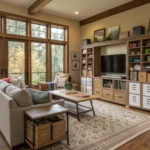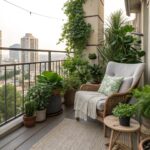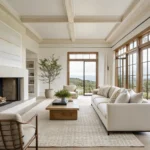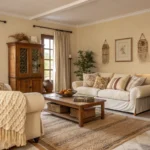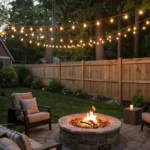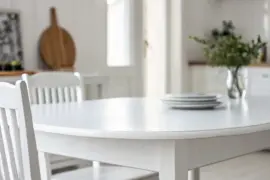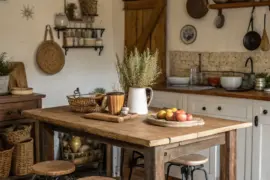Moving in together marks an exciting milestone, but when you’re sharing a compact apartment or studio, thoughtful planning becomes essential for both harmony and functionality. The key lies in creating distinct zones, maximizing every square foot, and establishing systems that work for two people with different habits and needs.
Understanding the Psychology of Shared Small Spaces
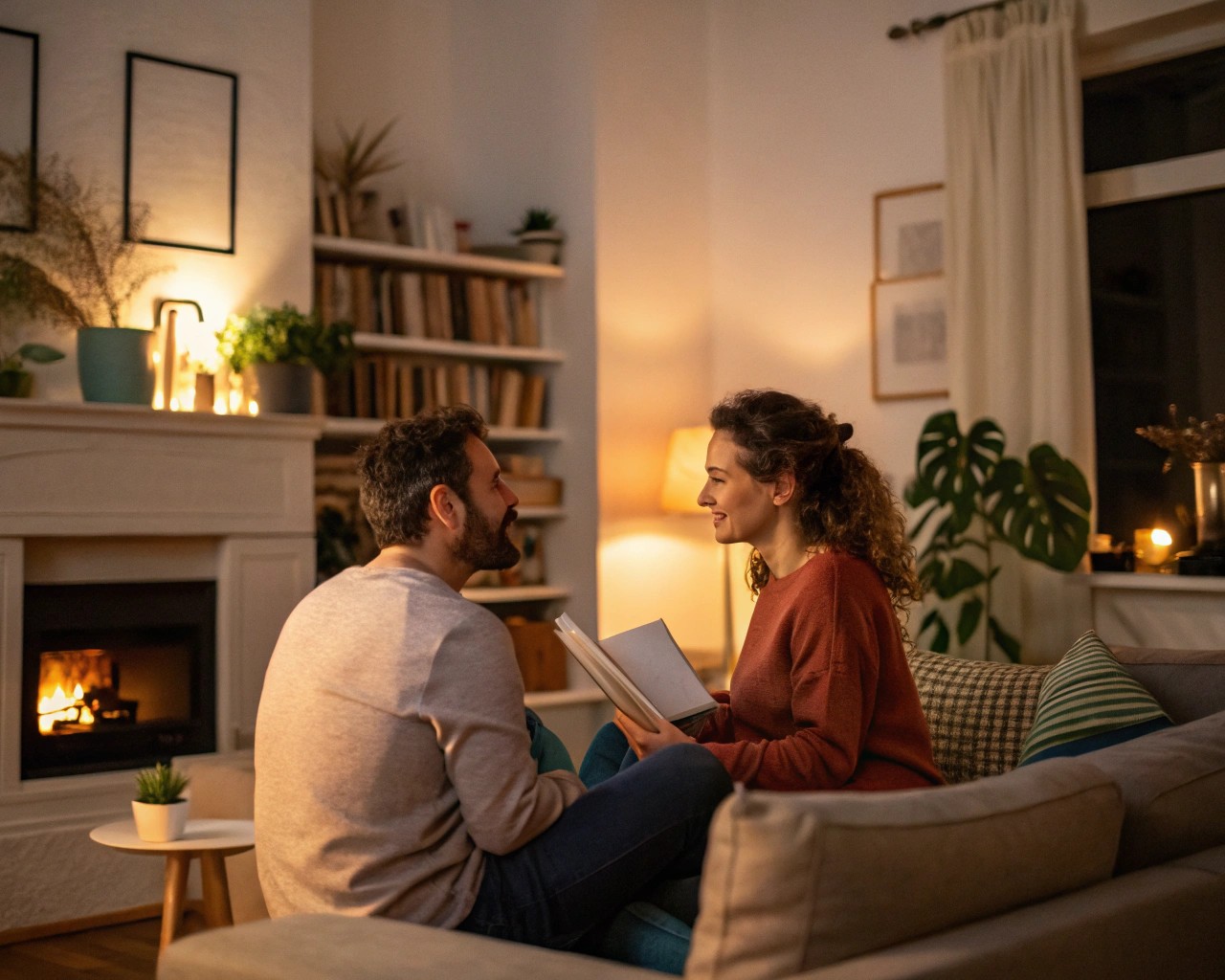
Living in close quarters with a partner presents unique challenges that extend beyond mere physical constraints. Research shows that coexisting in the same space can be psychologically challenging, especially if you’ve been accustomed to having your own place. When personal belongings are touched, moved, or when established systems are disrupted, it can feel like an invasion of personal space.
I’ve observed that successful couples in small spaces understand this dynamic from the start. They recognize that feeling cramped isn’t just about square footage—it’s about creating breathing room through smart design choices and clear boundaries. The most common friction points arise around storage systems, cleaning habits, and the need for occasional solitude within shared quarters.
Key psychological considerations include:
- Territory establishment – Each person needs designated spaces for their belongings
- Routine coordination – Morning and evening routines require strategic timing in single-bathroom spaces
- Alone time planning – Creating opportunities for individual activities within shared space
- Compromise readiness – Accepting that some personal preferences may need adjustment
Pre-Move Planning: Merging Two Lives Successfully

Before combining households, couples must make strategic decisions about which belongings to keep, donate, or discard. This process requires diplomatic negotiation and practical assessment.
The Consolidation Strategy:
When evaluating duplicate items (beds, sofas, dressers), use the condition-based decision method: place identical items side by side and eliminate the one in worse condition. For items of similar quality, consider these factors:
| Decision Factor | Evaluation Questions |
|---|---|
| Size Efficiency | Which piece better fits your new space constraints? |
| Multi-functionality | Does one item serve multiple purposes? |
| Style Cohesion | Which better matches your shared aesthetic vision? |
| Sentimental Value | Are there meaningful attachments to consider? |
Essential Pre-Move Inventory:
- Furniture audit – Measure everything against your new floor plan
- Kitchen consolidation – Keep the best version of duplicate appliances
- Clothing assessment – Plan closet space allocation before move-in day
- Storage evaluation – Identify which organizational systems to maintain
Strategic Furniture Selection for Maximum Function
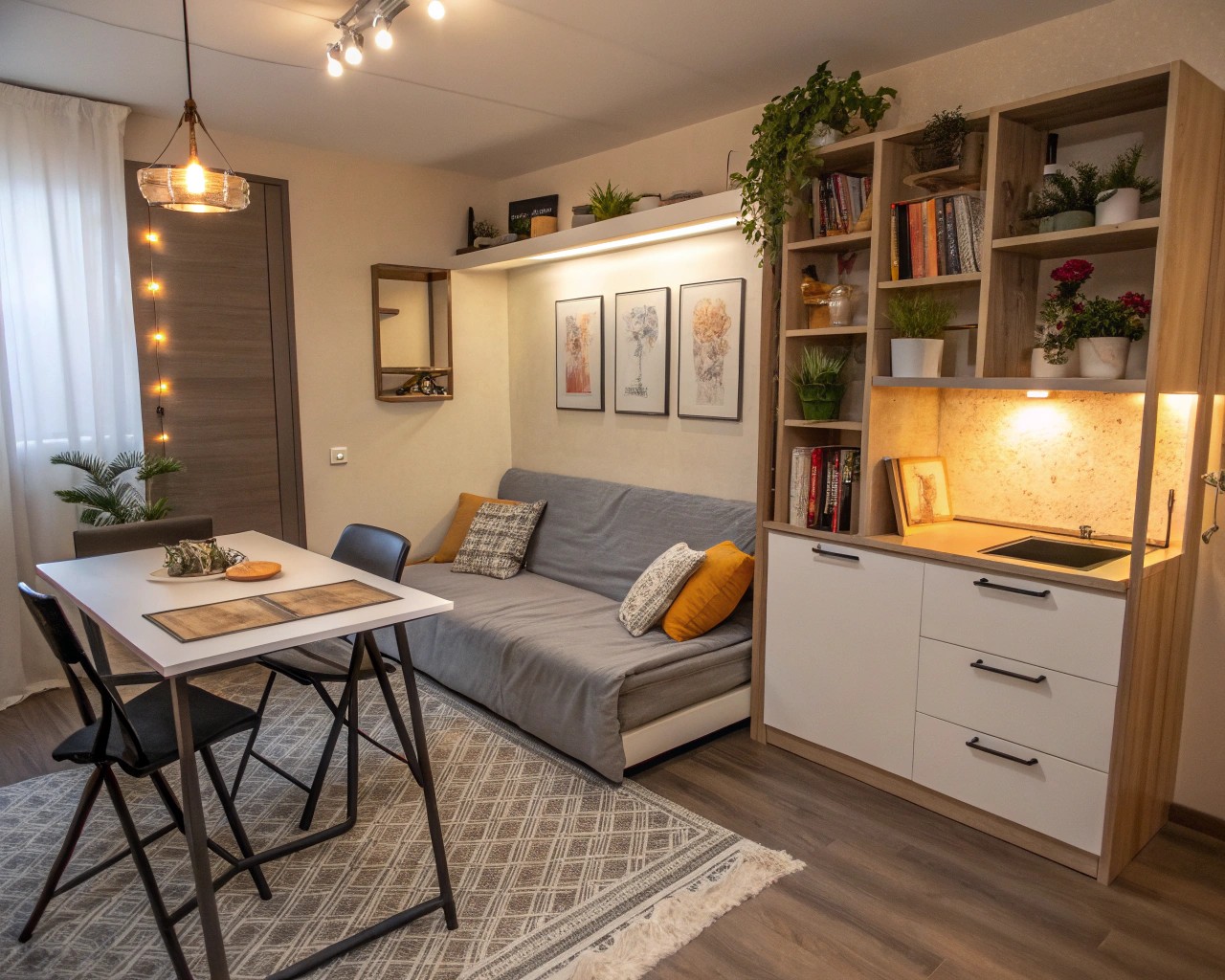
Multi-functional furniture forms the backbone of successful small-space living for couples. Each piece should ideally serve at least two purposes while maintaining aesthetic appeal.
Primary Multi-Function Categories:
Sleeping Solutions:
- Sofa beds with storage – HEMNES-style designs offer dual seating/sleeping plus internal storage for bedding
- Daybed configurations – UTÅKER models transform between single bed, double bed, and sofa arrangements
- Storage ottomans – Function as coffee tables, extra seating, and concealed storage
Workspace Integration:
- Fold-down desks – Wall-mounted options that disappear when not needed
- Console table workstations – Narrow profiles that serve as both desk and display space
- Storage benches – Dining seating that conceals work supplies or linens
Dining Flexibility:
- Expandable tables – NORDEN-style designs with fold-out sections and built-in drawers
- Bar cart systems – Mobile units serving as side tables, bar storage, and extra surface area
From my experience with studio transformations, couples who invest in quality multi-functional pieces initially save money long-term by avoiding the need to constantly replace inadequate furniture as needs evolve.
Mastering Vertical Space and Storage Solutions
Vertical space represents the most underutilized asset in small apartments. Successful couples learn to think three-dimensionally, using wall height to create storage and functional areas that don’t compete with floor space.
Wall-Mounted Storage Systems:
- Floor-to-ceiling shelving – Creates illusion of height while maximizing storage capacity
- Floating shelves – Keep floors clear while providing display and storage options
- Pegboard systems – Adaptable storage for tools, kitchen items, or office supplies
- Wall-mounted folding desks – Workspace that disappears when not needed
Creative Vertical Solutions:
Kitchen Applications:
- Magnetic spice storage on refrigerator sides
- Ceiling-mounted pot racks over islands or peninsulas
- Inside cabinet door organizers for cleaning supplies
- Stackable shelf inserts for doubling cabinet capacity
Bedroom Maximization:
- Over-bed shelving for books and personal items
- Behind-door shoe organizers for accessories
- Ceiling hooks for bags or seasonal clothing
- Under-bed storage boxes for out-of-season items
Bathroom Efficiency:
- Over-toilet shelving units for linens and toiletries
- Shower caddy systems that don’t require floor space
- Medicine cabinet alternatives using wall-mounted containers
- Towel bars that extend vertically rather than horizontally
Layout Strategies for Couples’ Needs
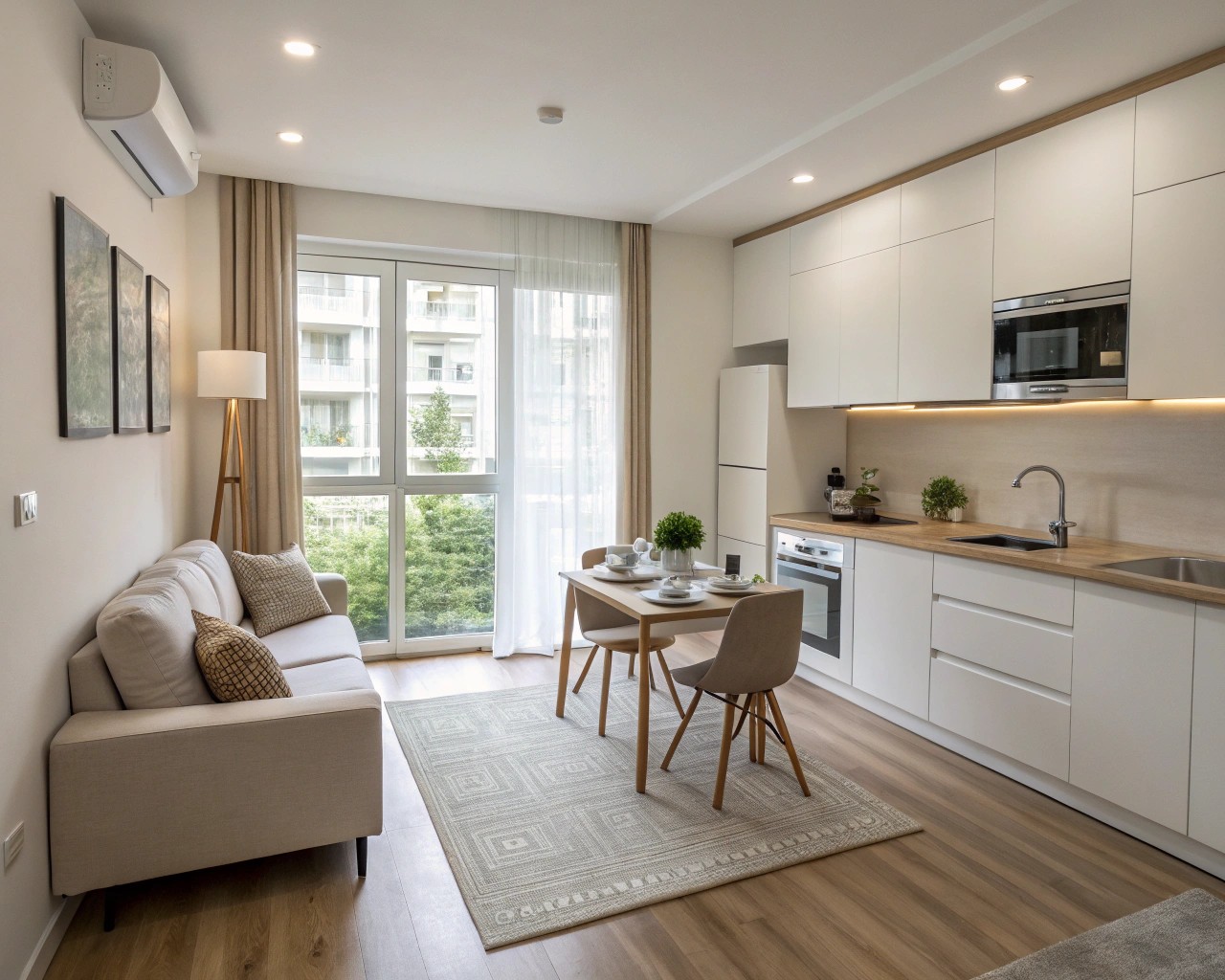
Creating functional zones within a single room requires strategic furniture placement that acknowledges both partners’ daily routines and privacy needs.
The Zone-Based Approach:
Living/Sleeping Separation:
Position the bed against the longest wall to maximize floor space in the center of the room. Use a tall shelving unit or curtain panel to create visual separation between sleeping and living areas without completely closing off the space.
Dual Workspace Configuration:
When both partners work from home, corner placement of individual desks works most effectively. One desk can occupy a corner position while the second utilizes wall space perpendicular to the first, creating an L-shaped work zone that feels separate but connected.
Traffic Flow Optimization:
Ensure at least 24 inches of walking space around the bed and 36 inches in main circulation areas. This prevents the cramped feeling that occurs when furniture crowds movement patterns.
Sample 400-500 sq ft Layout:
| Zone | Location | Key Elements |
|---|---|---|
| Sleeping | Against longest wall | Bed with under-storage, wall-mounted lighting |
| Living | Center room | Compact sofa, foldable coffee table |
| Work | Corner areas | Two individual desk spaces with task lighting |
| Storage | Vertical walls | Floor-to-ceiling units, floating shelves |
In a recent 400-square-foot transformation I observed, the couple maximized their limited footprint by creating a bedroom where only one person could move at a time, but compensated by ensuring the living area accommodated both partners comfortably for evening relaxation.
Smart Color and Lighting Strategies
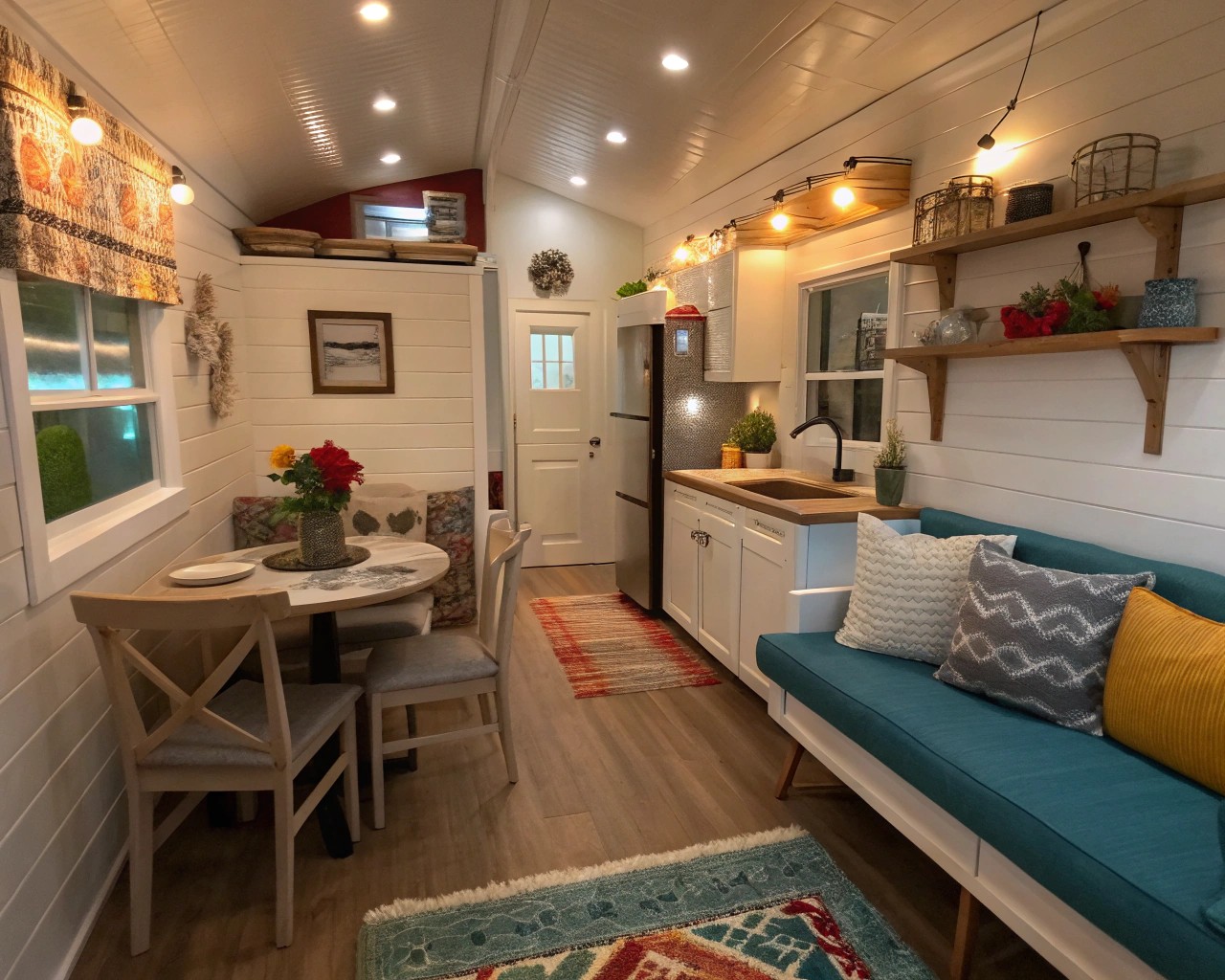
Color psychology plays a crucial role in making small spaces feel larger and more harmonious for two people with potentially different style preferences.
Foundation Color Schemes:
Light, neutral base colors create cohesive flow and maximize the sense of space. Whites, creams, soft grays, and warm beiges reflect light effectively and provide a calm backdrop for shared living.
Strategic Color Implementation:
- 60-30-10 Rule – 60% neutral base, 30% secondary color, 10% accent colors
- Consistent flooring – Same flooring throughout creates visual continuity
- Monochromatic variations – Different shades of the same color family add depth without chaos
- Partner compromise colors – Choose neutrals that neither partner dislikes
Lighting Layer Strategy:
Natural Light Maximization:
- Replace heavy curtains with sheer or light-colored fabrics
- Position mirrors opposite windows to reflect daylight
- Keep window treatments minimal during daytime hours
Artificial Lighting Combinations:
- Ambient lighting – Ceiling fixtures for general illumination
- Task lighting – Desk lamps and reading lights for individual activities
- Accent lighting – Wall sconces and decorative fixtures for mood
Couples-Specific Lighting Considerations:
- Individual bedside reading lights to avoid disturbing a sleeping partner
- Separate task lighting for dual workspace areas
- Dimmer switches for adjusting mood lighting together
Privacy and Personal Space Solutions
Even the most compatible couples need occasional solitude and personal space. Small apartments require creative solutions for creating privacy without permanent walls.
Temporary Separation Techniques:
Physical Dividers:
- Curtain panels – Ceiling-mounted tracks allow flexible room division
- Folding screens – Portable options that store flat when not needed
- Tall plants – Natural dividers that improve air quality simultaneously
- Open shelving units – Provide separation while maintaining light flow
Behavioral Privacy Strategies:
- Headphone agreements – Establish when individual audio entertainment is appropriate
- Schedule coordination – Plan individual activities during partner’s work calls
- Bathroom timing – Morning routine scheduling to avoid conflicts
- Reading nooks – Designate specific chairs or corners for individual quiet time
The most successful couples I’ve worked with establish “retreat signals”—subtle ways to communicate the need for personal space without creating conflict or hurt feelings.
Organization Systems That Work for Two
Small spaces demand rigorous organization, but systems must accommodate two different organizational styles and preferences.
Shared vs. Individual Storage:
Individual Territories:
- Separate closet sections with clear boundaries
- Personal drawer assignments in shared furniture
- Individual bathroom storage areas
- Designated spots for keys, wallets, and daily items
Shared Systems:
- Common area cleaning supplies
- Kitchen organization by function rather than ownership
- Living room storage for shared entertainment items
- Utility storage (tools, light bulbs, batteries)
Daily Maintenance Protocols:
The 10-Minute Rule:
Spend 10 minutes each evening returning items to designated places. In small spaces, even minor clutter quickly creates a sense of chaos.
Weekly Organization Tasks:
- Monday – Kitchen deep clean and fridge organization
- Wednesday – Bathroom supplies and medicine cabinet check
- Friday – Bedroom and closet straightening
- Sunday – Living area reset and planning for the week
Seasonal Storage Rotation:
- Under-bed storage for out-of-season clothing
- Vacuum-sealed bags for winter coats and holiday decorations
- Closet rod elevation systems for seasonal wardrobe changes
- Basement or external storage unit evaluation for non-essential items
Creating Outdoor Extensions in Small Spaces
Balconies, patios, and even window areas can function as room extensions when designed thoughtfully, providing additional space for couples to spread out.
Balcony Optimization Strategies:
Vertical Gardening Systems:
- Wall-mounted planters that don’t require floor space
- Hanging baskets for herbs and small vegetables
- Railing-mounted containers for flowers or cooking herbs
- Trellis systems for climbing plants that create privacy screening
Functional Outdoor Furniture:
- Folding bistro sets that store flat against walls
- Storage benches that hold outdoor cushions and supplies
- Multi-level plant stands that maximize growing space
- Weather-resistant storage boxes that double as seating
Climate Extension Techniques:
- String lighting for evening ambiance and extended use hours
- Outdoor rugs that define seating areas and add comfort
- Portable heaters for shoulder season use
- Retractable shade solutions for hot climates
Container Selection Guidelines:
| Container Type | Best For | Advantages |
|---|---|---|
| Plastic/Fiberglass | Herbs, small vegetables | Lightweight, weather-resistant, affordable |
| Self-watering | Busy couples | Reduces maintenance, prevents over/under-watering |
| Vertical towers | Limited floor space | Maximum plants per square foot |
| Hanging baskets | Trailing plants | Utilizes overhead space effectively |
I’ve seen couples effectively double their usable living space by treating their balcony as an outdoor room, complete with dining area, workspace, and garden elements that provide both beauty and function.
Technology Integration for Harmony
Modern small-space living benefits significantly from thoughtful technology integration that minimizes physical clutter while maximizing functionality for two users.
Space-Saving Tech Solutions:
Entertainment Systems:
- Mounted TVs on tracks – Allow positioning for viewing from bed or sofa
- Wireless speakers – Eliminate cord clutter and provide whole-apartment audio
- Streaming devices – Replace multiple gaming systems and cable boxes
- Tablet mounts – Create secondary screens for individual use
Work-from-Home Technology:
- Wireless charging stations – Reduce cord clutter on limited surface space
- Cloud storage systems – Minimize need for physical file storage
- Noise-canceling headphones – Essential for concurrent video calls
- Adjustable monitor arms – Allow screen positioning for different users
Home Automation for Couples:
- Smart lighting – Individual control from phones eliminates switch conflicts
- Programmable thermostats – Automatically adjust for comfort without negotiation
- Smart locks – Eliminate key coordination issues
- Voice assistants – Hands-free control when arms are full
Seasonal Adaptations and Flexibility
Small spaces require flexibility to accommodate changing seasons, holidays, and evolving relationship needs.
Seasonal Storage Rotation:
Winter Preparations:
- Heavy coat storage solutions that don’t overwhelm small closets
- Boot organization systems for entryways
- Blanket storage that’s accessible but hidden
- Holiday decoration storage in overhead areas
Summer Adaptations:
- Lightweight fabric swaps for curtains and throw pillows
- Fan placement strategies for optimal air circulation
- Outdoor furniture that transitions between seasons
- Swimwear and beach gear organization
Transitional Flexibility:
Furniture Positioning:
Rotate furniture arrangements seasonally to maintain visual interest and optimize natural light patterns. Moving a sofa from a winter position near a heat source to a summer location near windows can completely change a room’s functionality.
Guest Accommodation:
- Murphy bed alternatives – Sofa beds or air mattresses for occasional visitors
- Folding furniture – Chairs and tables that appear when needed
- Privacy screens – Create temporary guest sleeping areas
- Bathroom guest supplies – Compact storage for visitor toiletries


